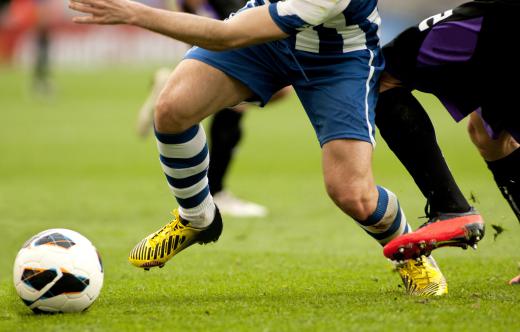At Sports&Hobbies, we're committed to delivering accurate, trustworthy information. Our expert-authored content is rigorously fact-checked and sourced from credible authorities. Discover how we uphold the highest standards in providing you with reliable knowledge.
What is Mile High Stadium?
Mile High Stadium was a sports arena in Denver, Colorado, that was in professional use from 1948 to 2001. Most notably the former home of Major League Baseball’s Colorado Rockies and the National Football League’s Denver Broncos, Mile High Stadium was known as Bears Stadium until 1968 because it was the home of the Denver Bears, a minor-league baseball team. It also was home to Major League Soccer's Colorado Rapids of Major League Soccer, the United States Football League's Denver Gold and minor-league baseball's Denver Zephyrs. Denver's high altitude — 1 mile (1.6 m) above sea level — gave the stadium its name and resulted in what was considered to be a home-field advantage.
Early Years

The stadium was built by Denver native Bob Howsam to a minor league baseball venue. It initially featured a 17,000-seat grandstand. In the 1950s, Bears Stadium's capacity was increased to about 23,000 seats, then to almost 35,000 seats to accommodate a proposed Major League Baseball team. Mile High Stadium became home to its first football team in 1960, when the Denver Broncos became a member of the American Football League, which later merged with the National Football League.
Expansion

In 1968, the stadium had an upper deck added and was sold to the city of Denver, which renamed it Mile High Stadium. With the addition of these extra seats, the capacity was raised to about 50,000. Further expansion, including a third deck, raised the capacity to about 63,000 in 1974 and to about 75,000 by 1977.
Retractable stands along the east side of Mile High Stadium allowed it to be converted from a football field to a baseball field. The eastern stands could be included to form a horseshoe for football games or removed to open the field for a baseball game. With the adding of luxury suites during the 1980s and the Colorado Rockies in 1993, Mile High Stadium thrived for a couple of years.
The Final Years
The Rockies, however, moved to Coors Field in 1995. The Broncos and Rapids moved to Invesco Field in 2001. Mile High Stadium was demolished in 2002. The process took three months and was completed on 17 April 2002.
Altitude's Effects
It was commonly believed that Denver's altitude gave the home teams an advantage at Mile High Stadium. The bodies of players who regularly train and play at high altitudes get used to the air's reduced oxygen content. Visiting players, however, often find it more difficult to breathe at higher altitudes. In addition, the lighter air at high altitudes allows balls to travel slightly farther through the air, a factor to which home teams can more easily adapt because they are used to the conditions. They also can build their teams to take advantage of the high altitude, such as a baseball team acquiring more power hitters to take advantage of the fact that it is a little easier to hit home runs.
AS FEATURED ON:
AS FEATURED ON:












Discuss this Article
Post your comments